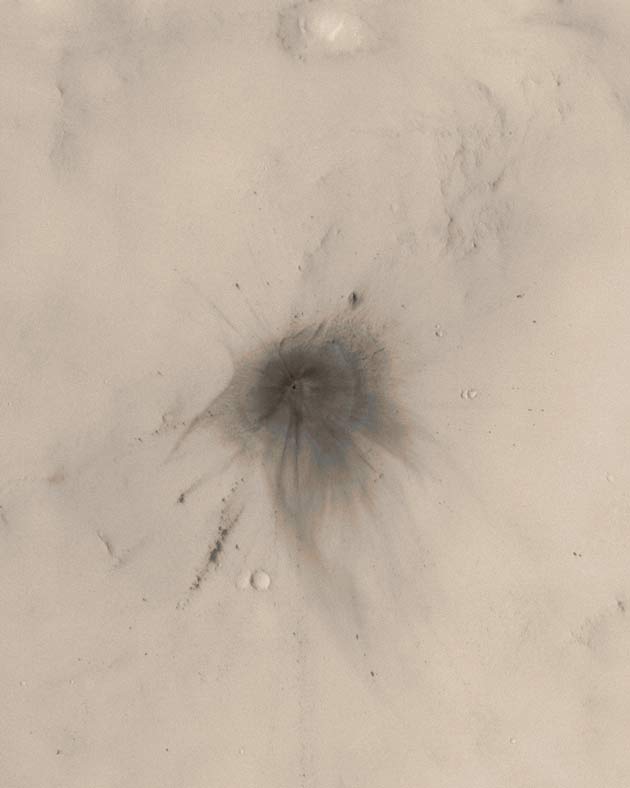Mars Takes a Fresh Pounding

The planet Mars is a glutton for punishment.
Scientistshave found no less than 20 new craters etched into the red planet's surfacefrom space rocks that pummeled Mars within the last seven years [image].
"If youwere to live on Mars for about 20 years, you would live close enough to one ofthese events to hear it," said researchers Michael Malin, who led the study."So there'd be a big boom and you'd know there was an impact crater."
Malin,chief scientist at San Diego, California's Malin Space Science Systems, andhis team used the Mars Orbiter Camera aboard NASA's now silent MarsGlobal Surveyor (MGS) to photograph about 30 percent of the planet betweenJanuary and May this year. They compared the new images with photographs takenby MGS during earlier surveys to find new impact sites.
In the samestudy, researchers foundevidence that liquid water may have flowed out of martiangullies within the last five to seven years [images].
"It wasjust amazing that we could even do that," said Kenneth Edgett, a Malin SpaceScience Systems researcher who spotted the first of the new craters, told SPACE.com."And it was really a whirlwind from that first one all the through the 20th."
Malin saidthat it was by chance Edgett spotted an image with a new crater and recalled asimilar view taken years earlier by the MGS orbiter. Their subsequent surveyfound the new craters, which range in diameter from seven feet (two meters) to486 feet (148 meters), and an average impact rate of about 12 per year.
Breaking space news, the latest updates on rocket launches, skywatching events and more!
A fewmonths after Malin and his team performed their survey, the MGS probe wentsilent and is thought tobe lost after 10 years of spaceflight.
Theresearch is detailed in the most recent issue of the journal Science,and it validated crater impact models of Mars that until now were based solelyon theory, Malin said.
The newcraters also suggest a potential hazard for future astronaut explorers onlong-duration missions to the red planet, he added.
"There is ahazard, it's probably a low hazard," Malin said. "But it's one we need to thinkabout in terms of these objects hitting Mars at a fairly substantial rate."
- Potential Danger: Moon Hit By More Space Rocks Than Thought
- Changing Mars Gullies Hint at Recent Flowing Water
- Gully Gazing: Scientists Search for Flowing Water on Mars
- Mars Global Surveyor Remains Silent, Feared Lost
- Images: Visualizations of Mars
- All About Mars

Tariq is the award-winning Editor-in-Chief of Space.com and joined the team in 2001. He covers human spaceflight, as well as skywatching and entertainment. He became Space.com's Editor-in-Chief in 2019. Before joining Space.com, Tariq was a staff reporter for The Los Angeles Times covering education and city beats in La Habra, Fullerton and Huntington Beach. He's a recipient of the 2022 Harry Kolcum Award for excellence in space reporting and the 2025 Space Pioneer Award from the National Space Society. He is an Eagle Scout and Space Camp alum with journalism degrees from the USC and NYU. You can find Tariq at Space.com and as the co-host to the This Week In Space podcast on the TWiT network. To see his latest project, you can follow Tariq on Twitter @tariqjmalik.
